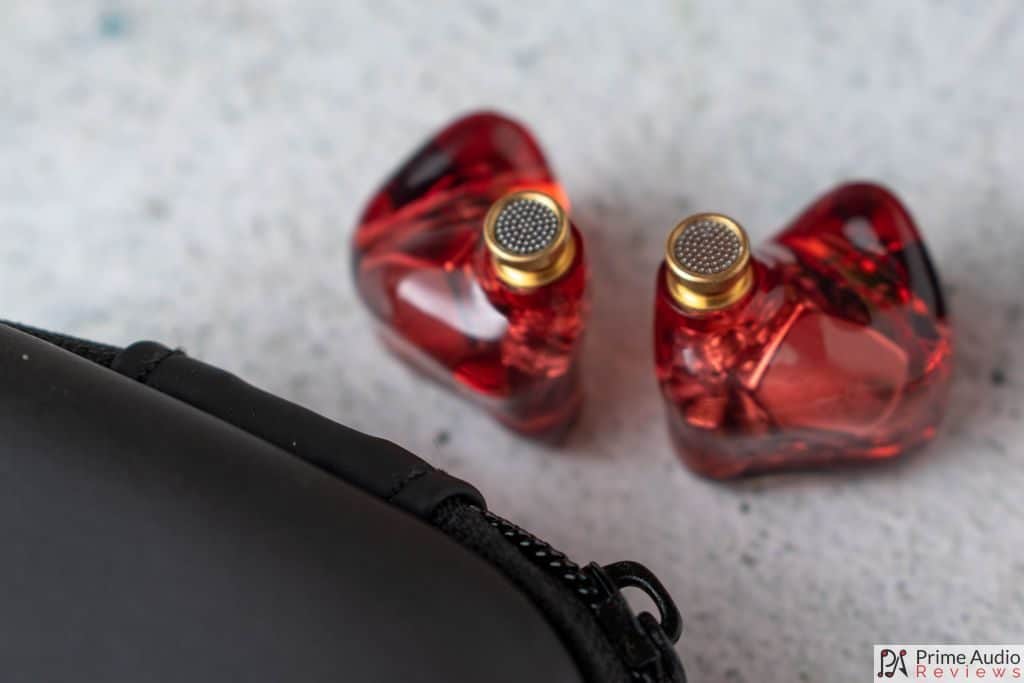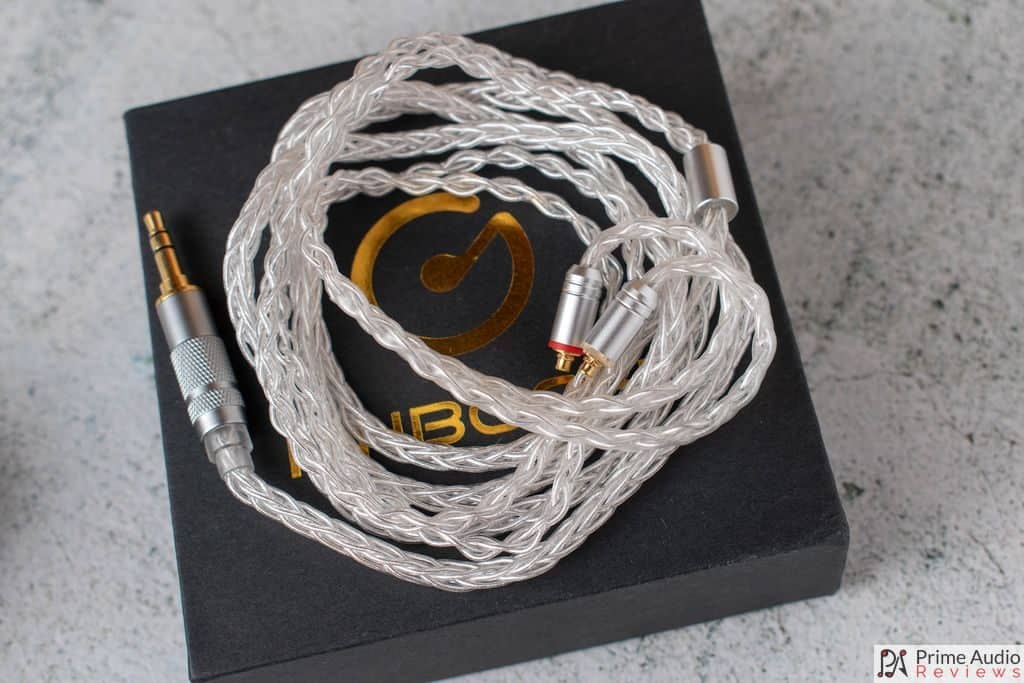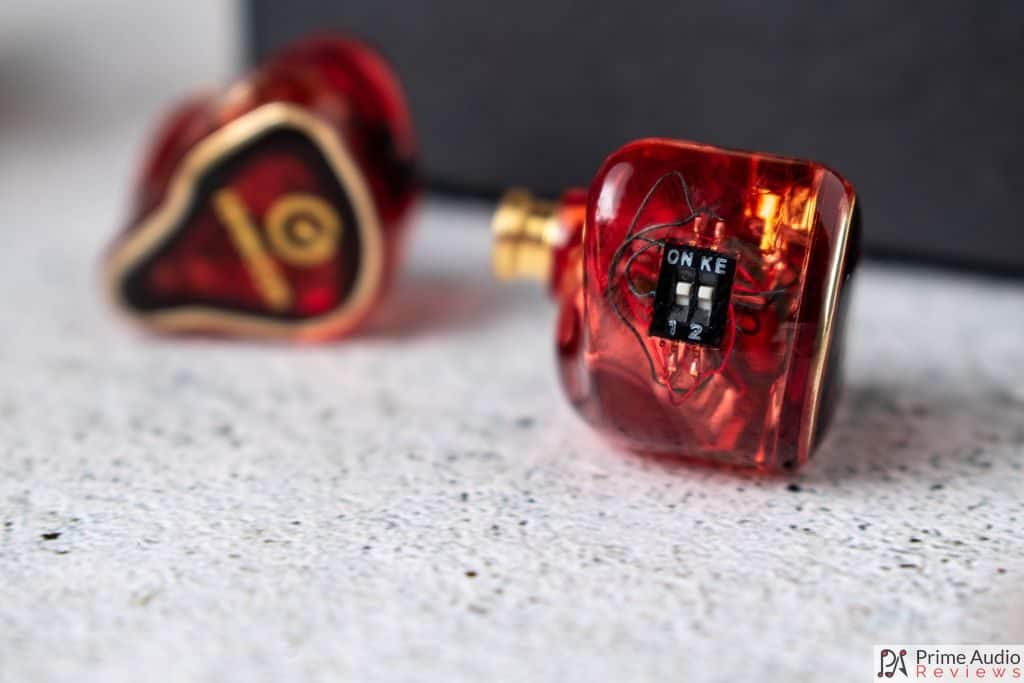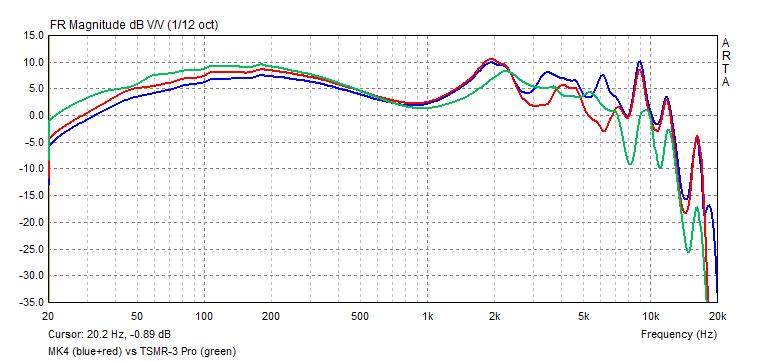Hi there PAR fam. Today we review the Kinboofi MK4 quad balanced armature driver earphones. These in-ear monitors deliver a clear and detailed sound and have a really nice and interesting visual styling. Are you on the lookout for an earphone with neutral tuning? If so, this one might tickle your fancy.
Kinboofi is an Amazon storefront that sells some familiar brand IEM products but recently seems to be establishing their own brand as well. You can check out the Kinboofi Amazon storefront here.
This sample was provided for the purpose of an honest review. All observations and opinions here are my own based on my experience with the product.
Kinboofi MK4 Review
- Original styling
- Great build quality
- Tuning switches
- Clarity and detail
- Neutral tuning won’t suit everyone
- Included carry case is very small
Package and Accessories
The Kinboofi MK4 arrived in a small, square box with the Kinboofi brand name and logo on the top. Inside the box is a small zipper case surrounded by soft black foam. Naturally, the earphones and accessories are all found inside the zipper case which is quite a feat when you see how small it is. Let’s take a look at the contents of the package in their entirety.
- Kinboofi MK4 earphones
- Detachable, braided SPC MMCX cable
- 3 pairs of narrow-bore silicone eartips (white)
- 3 pairs of wide-bore silicone eartips (grey and green)
- Zipper case
- Switch adjusting tool
That’s a pretty decent bundle, to begin with however, the zipper case is very small so it can be a challenge to squeeze the earphones and cable in, let alone everything else. While I understand the purpose of this style of packaging is to reduce costs for international shipping, I’d really like to see a larger, more practical case included.

Build Quality and Design
The MK4 housings are transparent (and in my case red) and offer a clear view of the balanced armature drivers and wiring within. Although it’s not stated anywhere in the specifications, I suspect the housings are 3D printed because they are not only fairly complex, including sound tubes but they’re very uniform and symmetrical as well.
The faceplates are transparent and have a gold Kinboofi logo and border which gives the earpieces a premium feel. There are no vents on the shells anywhere but there are two tuning switches on the rear face which I will cover more later on.

Matching the gold trim on the faceplates, the nozzles are gold in colour and have a solid ridge to hold eartips securely in place. Overall, the build quality of the MK4 earphones is very nice and on par with other mid-tier IEMs on the market.

Comfort and Noise Isolation
The size of the faceplates is about average but the earpieces are quite thick, meaning they will likely protrude a bit from most people ears. For me comfort is good but I do need to use shallow doughnut-type eartips to get a proper seal.
Having said that, I can comfortably wear these for hours on end without any issues. They are lightweight and all the edges are smooth and rounded.
Noise isolation is average for this type of custom-like housing meaning a good amount of external noise gets blocked and when you have music playing you won’t hear much else. Noise leak is minimal too, as is the norm for a multi-BA earphone.
Cable
The included cable is pliable and very comfortable. It’s similar to the CTZ-6 and Fearless Audio S6RUI cables but is softer and more supple than those. A straight aluminium 3.5 mm plug with solid strain relief makes up the lower end of the cable.
The Y-split is a small, lightweight aluminium cylinder that you’ll hardly notice most of the time. There is no chin slider present which doesn’t bother me but I know that some people like to always have one. Considering how easy and inexpensive it is to add one I think that any quality cable should include one.
At the top end are some very pliable preformed ear guides which join with the aluminium colour-coded MMCX connectors. Overall it feels like a good quality cable that has good ergonomics, drapes well and has very little in the way of microphonics.

Sound
Gear used for testing includes the iBasso DX120 and FiiO M6 as portable sources. On the desktop, I fed FLAC files from MusicBee on my PC to the Fiio K3 DAC.
To summarize, the MK4 has a very clear and detailed sound signature that leans towards neutral and slightly analytical. It does have 2 tuning switches but the difference between the different configurations is fairly minimal.
Switches

The main difference between switch settings is found in the upper midrange and lower treble or between 3 kHz-6kHz. Switch 1 adds a little presence and clarity while switch 2 adds a very small amount of bass. The difference between configurations is almost negligible though and makes me question if they’re necessary.
The way I see it is that it just adds more cost for very little sound customization although I’m sure some people might appreciate it. Perhaps the manufacturer saw this too because it appears that only the version without switches is available on AliExpress at the time of writing this review.

Bass
The MK4 bass is tight with a fast attack and decay. It produces a fairly neutral sound that is accurate but is not overtly musical. It’s a speedy bass that does not show any bleed into the midrange and is agile and quick. Bassheads need not apply and I would expect the average consumer to be left wanting a bit more low-frequency oomph as that is what people are more used to.
Sub-bass notes lack body and authority which enhances midrange resolution but leaves music feeling a little clinical. Deep bass notes can be heard but there’s no physicality to them.
Mids
In the midrange, the MK4 brings tonal accuracy, clarity and reasonably strong resolution. Surprisingly the mids and vocals are still a touch recessed, reducing the overall body and resulting in a thinner, brighter presentation.
However, the timbre of vocals and instruments is good making the MK4 more suitable for acoustic or classical music. although I still find the midrange lacking some body.
Treble
While it lacks sparkle or excitement, the MK4’s treble is fairly even throughout and avoids any stridency or harshness. At louder volume, things can become a little bit uncomfortable for me as I’m sensitive to upper mid/lower treble accents but thankfully there is no sibilance present anywhere unless it’s in the recording.
Regardless of switch configuration the treble sits behind the upper midrange but is still detailed and provides some airiness to the sound.
Soundstage
The MK4 manifests a reasonably large stage that is slightly deeper than it is wide. Vocals are front and centre and have good density, making it feel as though the vocalist is standing out in front of you. Imaging is reasonably solid and layering is average, although the upper mids tend to dominate and blur the lines somewhat.

Comparisons
TSMR-3 Pro ($219)
The TSMR-3 Pro (review here) has more mid and sub-bass with a slower mid-bass roll off. It gives more of a physical rumble and impact than the MK4. Its upper midrange is less accented, making it smoother and less shouty up high.
Although its treble is less pronounced it doesn’t need to compete as much with the upper midrange and as such, contrasts more vividly against the warmth of the bass and lower midrange. The soundstage on the MK4 is a little larger but the TSMR has better separation and more pinpoint imaging.
In terms of comfort, I personally find them both pretty good but the large nozzle diameter on the TSMR can be problematic if you have narrow ear canals and it also makes tip rolling more of a challenge.
CTZ-6 ($157)
In this comparison, we have two monitors that lean towards a neutral sound signature. The CTZ bass measures almost identically but in reality, the sub-bass carries more authority and rumble.
In the midrange, the CTZ-6 is more forward, giving vocals (male vocals in particular) and instruments more body. Just like the MK4, the CTZ has an accentuated upper midrange that gives it a brighter tonality.
Treble on the CTZ is similar to the MK4 in quantity and has comparable characteristics although its layering is better defined. When it comes to comfort, the CTZ-6 is slightly better for my ears, due to its smaller footprint and shallower depth. Both come with a similar cable but the CTZ’s is stiffer and has a different braid pattern.

Conclusion
The Kinboofi MK4 is certainly an interesting IEM but just like the CTZ-6, it will appeal to a narrower demographic due to its neutral sound signature. Audiophiles throw the ‘neutral’ word around like it’s the holy grail but in reality, most people want some colouring in their monitor’s sound and I feel that will be the case with the MK4 as well.
While I do have some reservations about this type of tuning, I’m always happy to see new brands constantly popping up in the IEM scene. This one shows some real potential and I will be eagerly awaiting to see what Kinboofi does next.
Specifications
- Product Name: Kinboofi MK4 4BA drive unit in-ear earphone
- Brand: KINBOOFI
- Model: MK4
- Type: In-ear
- Impedance: 22Ω
- Earphone sensitivity: 116db/mW
- Frequency range: 20-20000Hz
- Cable Material: Silver-Plated
- Cable Length: 1.2m±5cm
- Earphone Interface Type: MMCX connector
- Drive unit: 4 Balanced Armature drive unit each side






